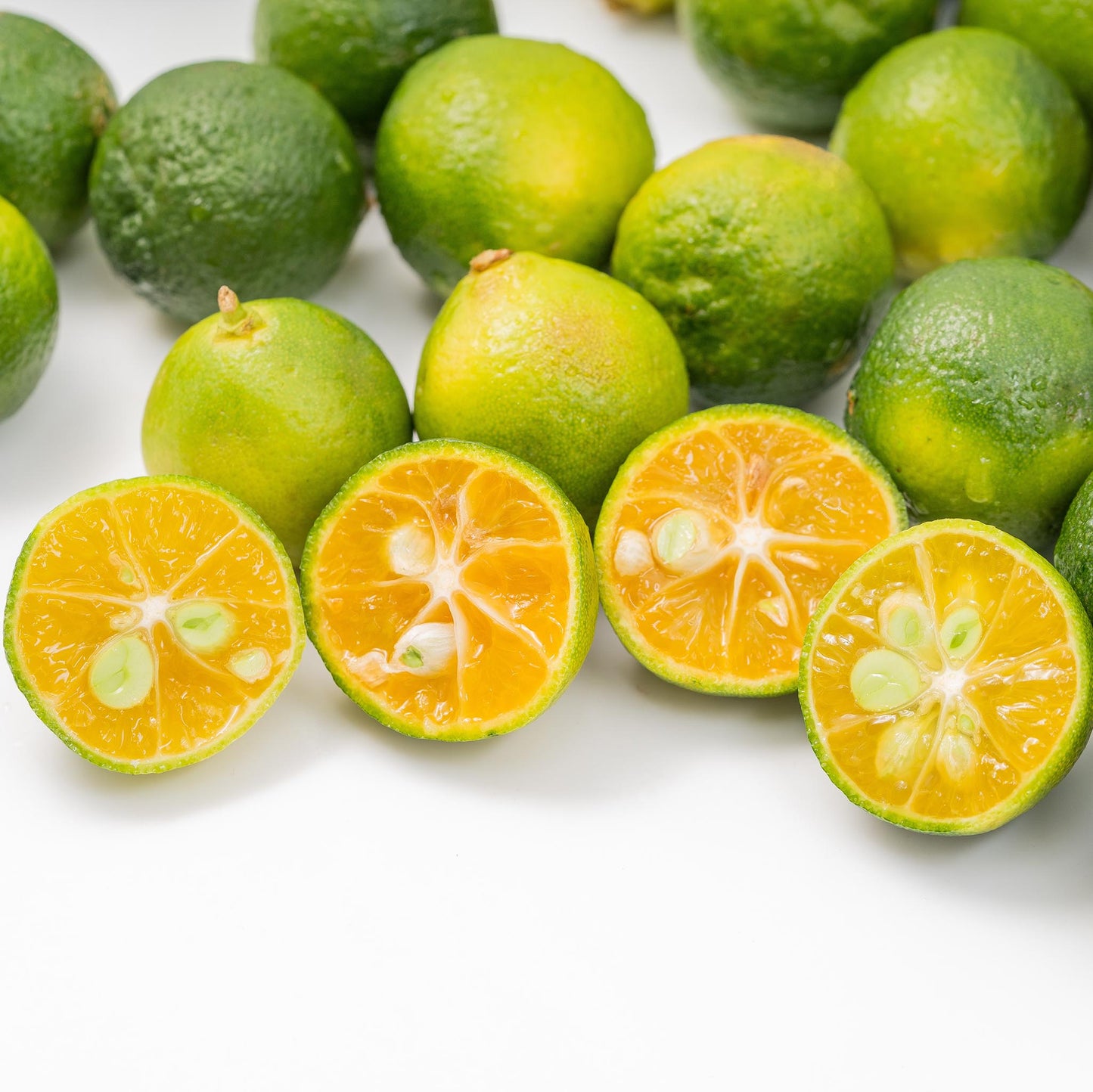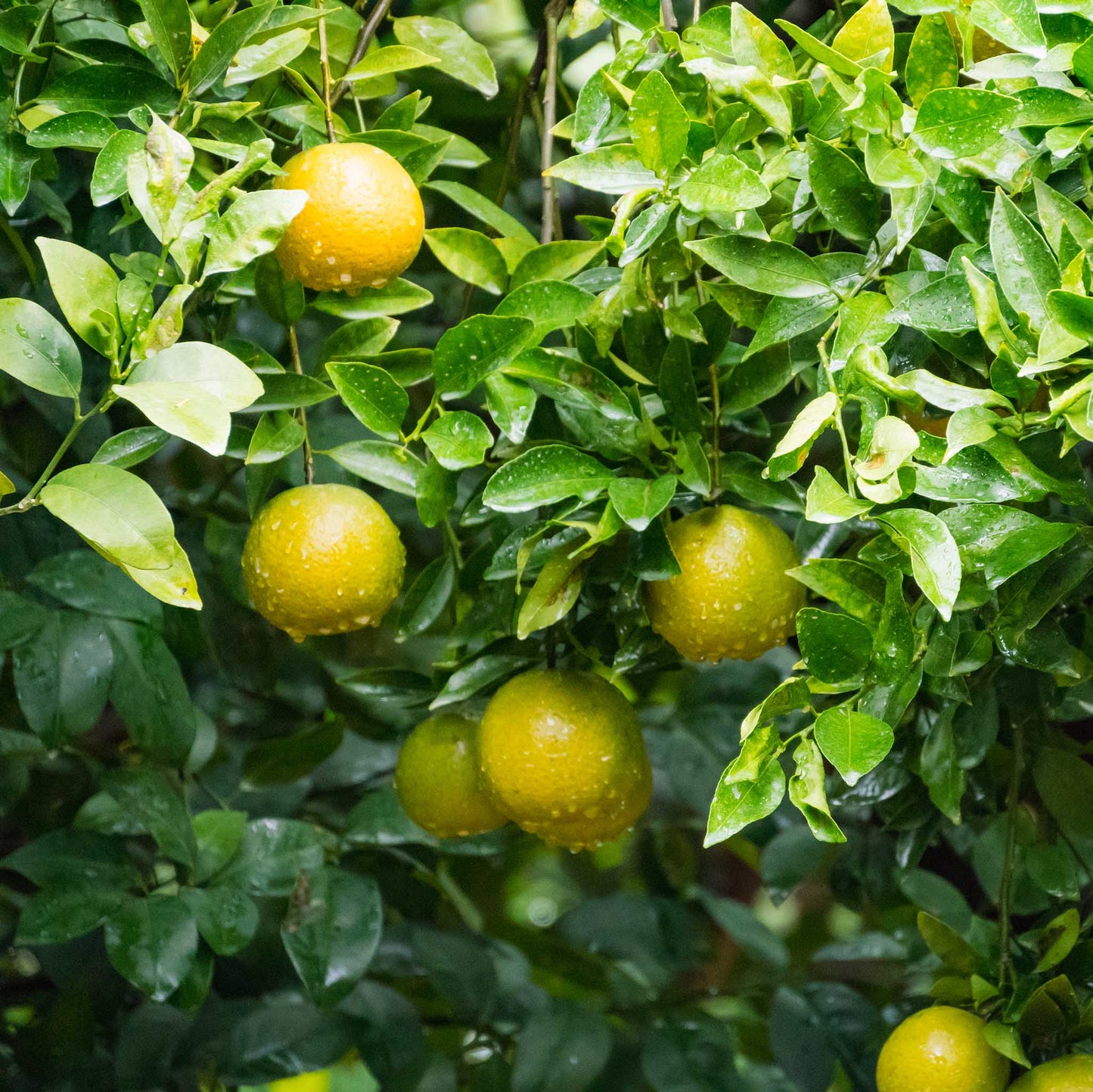In the Okinawan dialect, "shi" means "sour," and "kuwasa" means "to eat." Hence, Shikuwasa literally means "to eat the sourness." True to its name, this citrus gem delivers a distinctive sour taste, setting it apart from other citrus fruits.
Smaller than most citrus fruits, Shikuwasa measures only around 3 cm (just over an inch) in diameter. Despite its size, this fruit, belonging to the mandarin family, packs a flavourful punch that makes it a popular choice for use in Japanese dishes.
Shikuwasa can be enjoyed in different stages. When unripe, it has a green rind and is smaller, often referred to as a hirami lemon. At this stage, it has acidity levels similar to regular limes but offers a unique sweet and sour tang. After ripening during winter, Shikuwasa limes transform into kugani, or "yellow-gold tangerines." Though still small, the ripe fruits are much sweeter than their unripe counterparts, and their vibrant shades of yellow and orange come with a burst of flavour.
With one of the highest levels of nobiletin among citrus fruits, Shikuwasa is thought to have anti-tumour, anti-cancer, and anti-oxidative properties. Loaded with Vitamin C, beta-carotene, and DPPH antioxidants, it's a wonderful addition to your diet. While bitter, the rind and pith contain the most nobiletin. Try using dried Shikuwasa rind in tea or creating a paste of the fresh rind to use as a garnish or grating the rind to add flavour to salads and rice bowls. This fruit pairs well with herbs such as mint, coriander, parsley and ginger, fish such as salmon or red snapper, and meats including chicken, duck, pork, and beef.
Whole, unwashed Shikuwasa limes will keep for 2 to 3 weeks when stored in a plastic bag in the fridge. The fruits can also be frozen for approximately six months.
Email me when available



